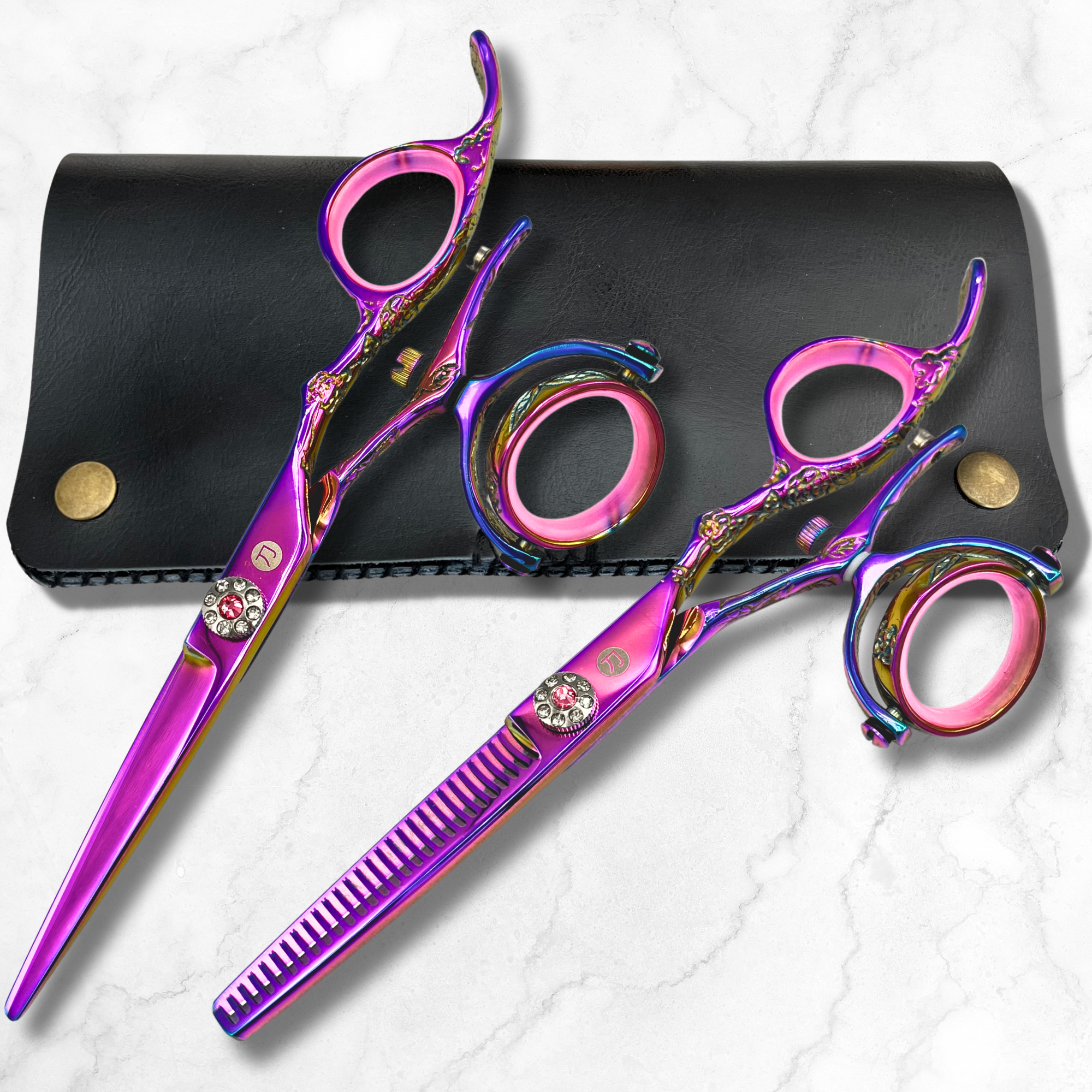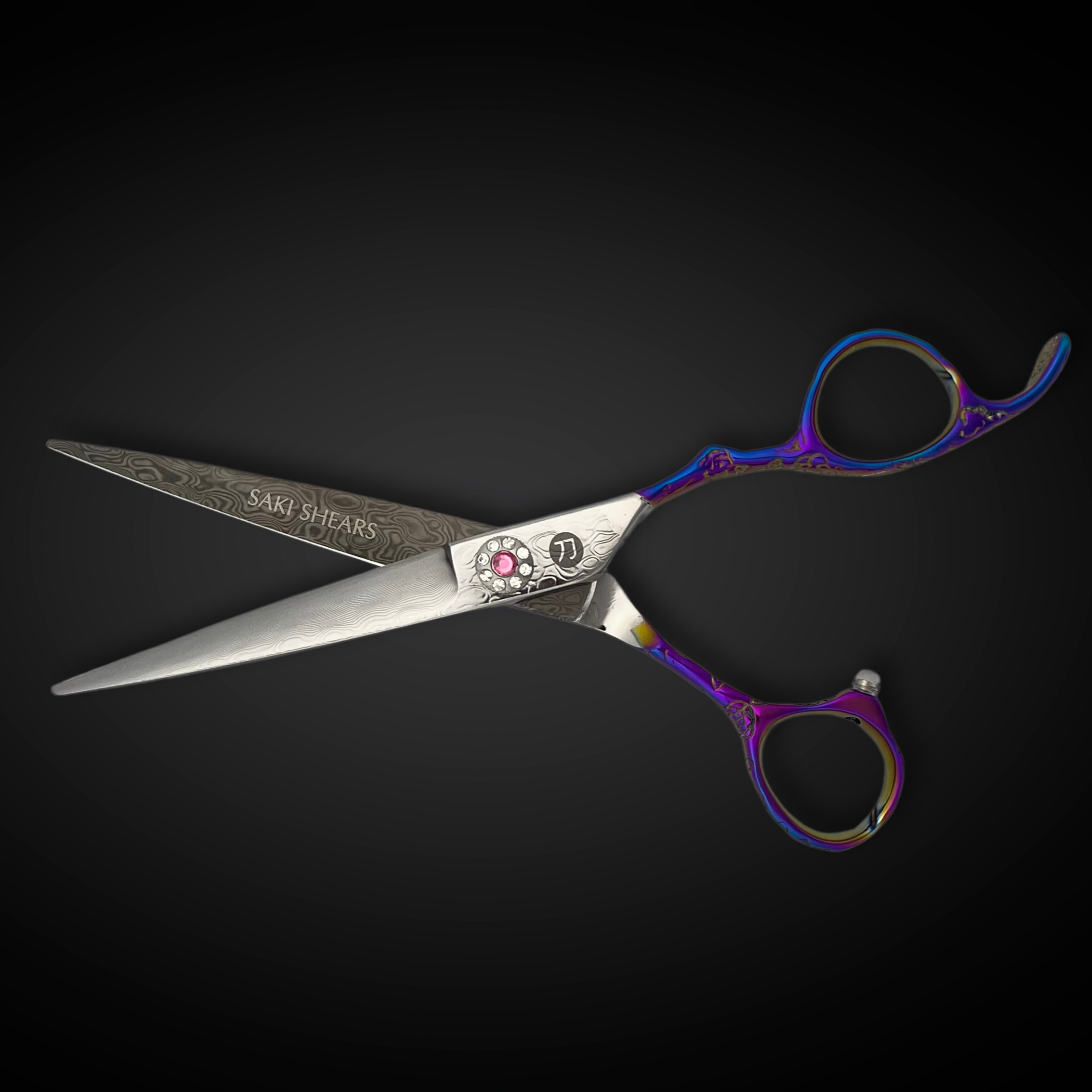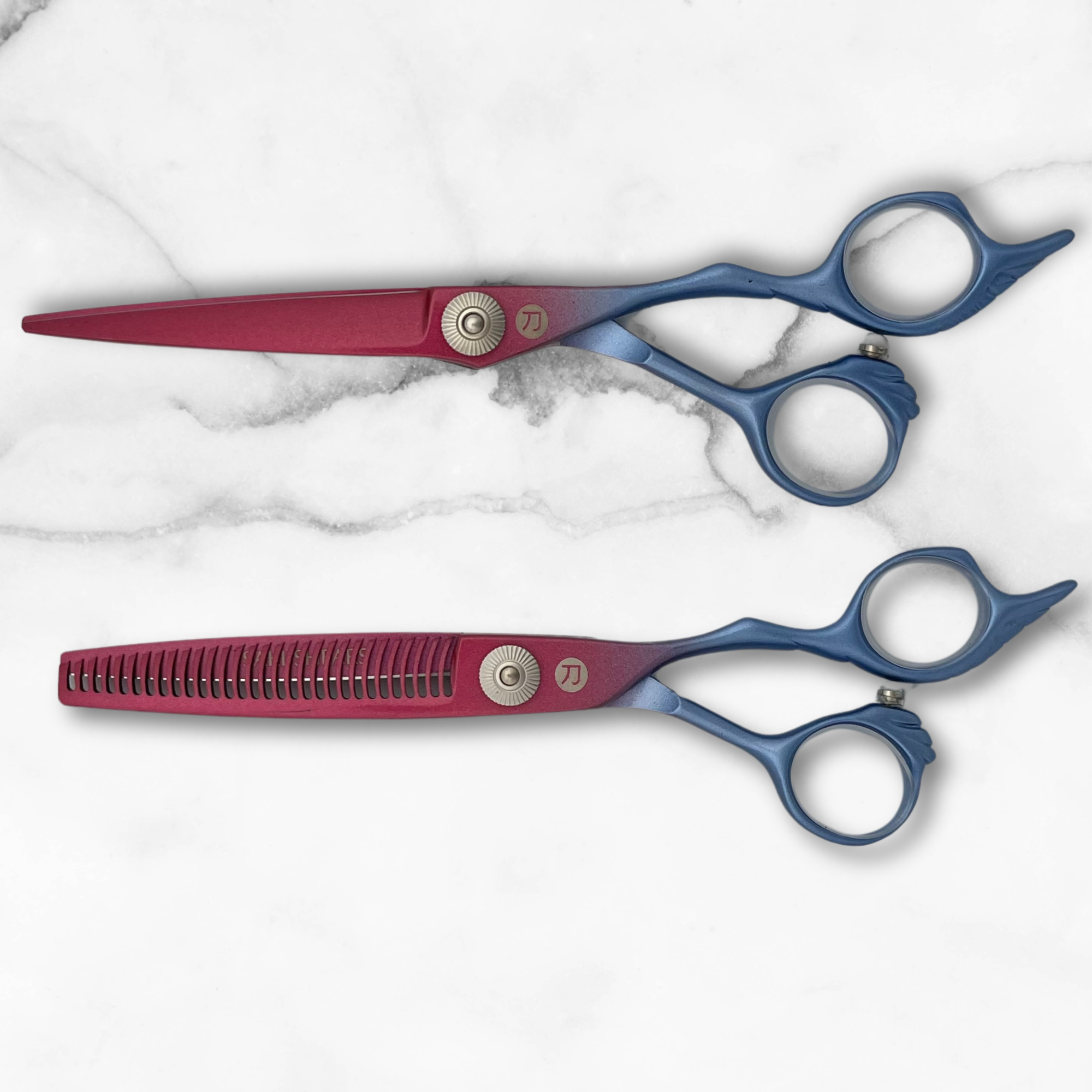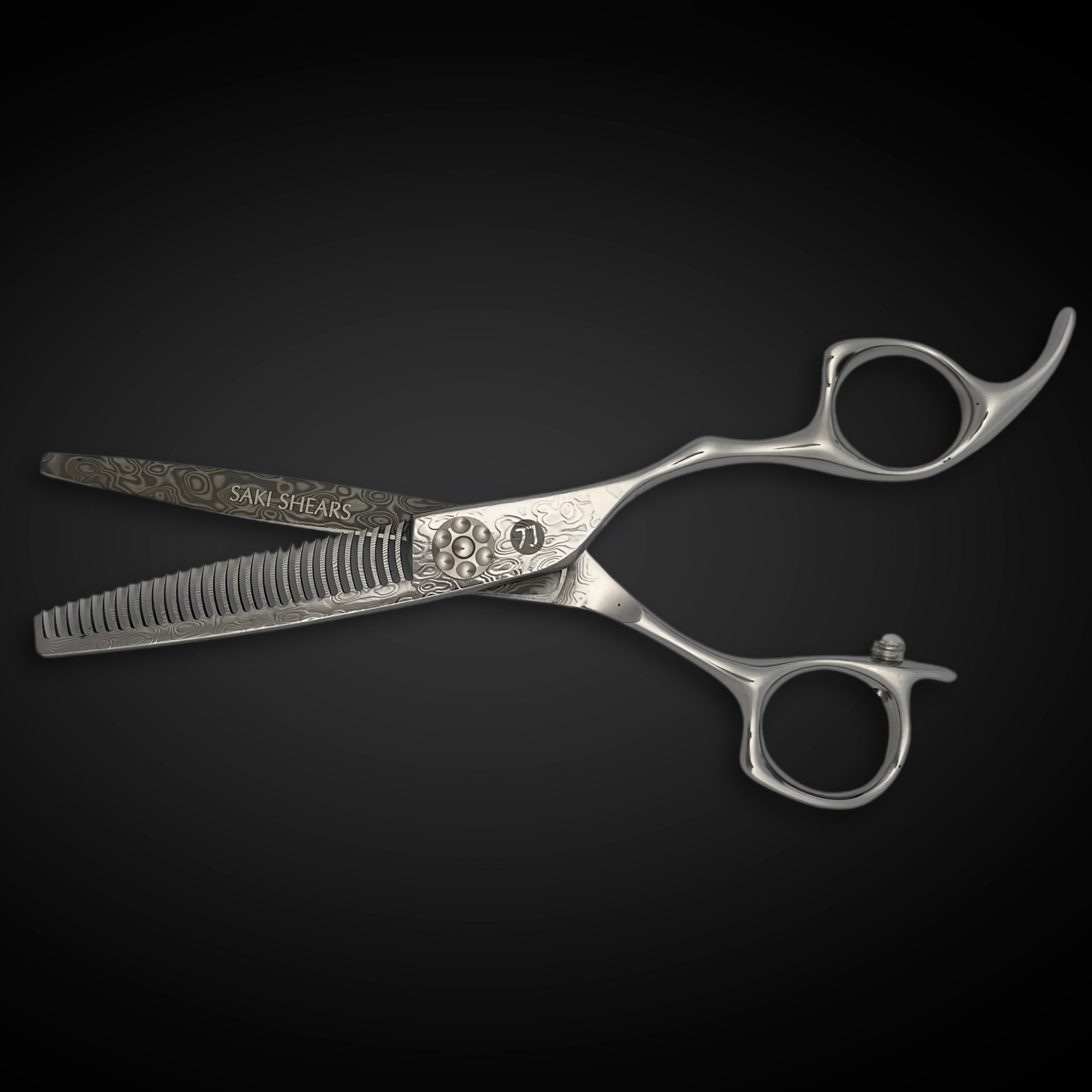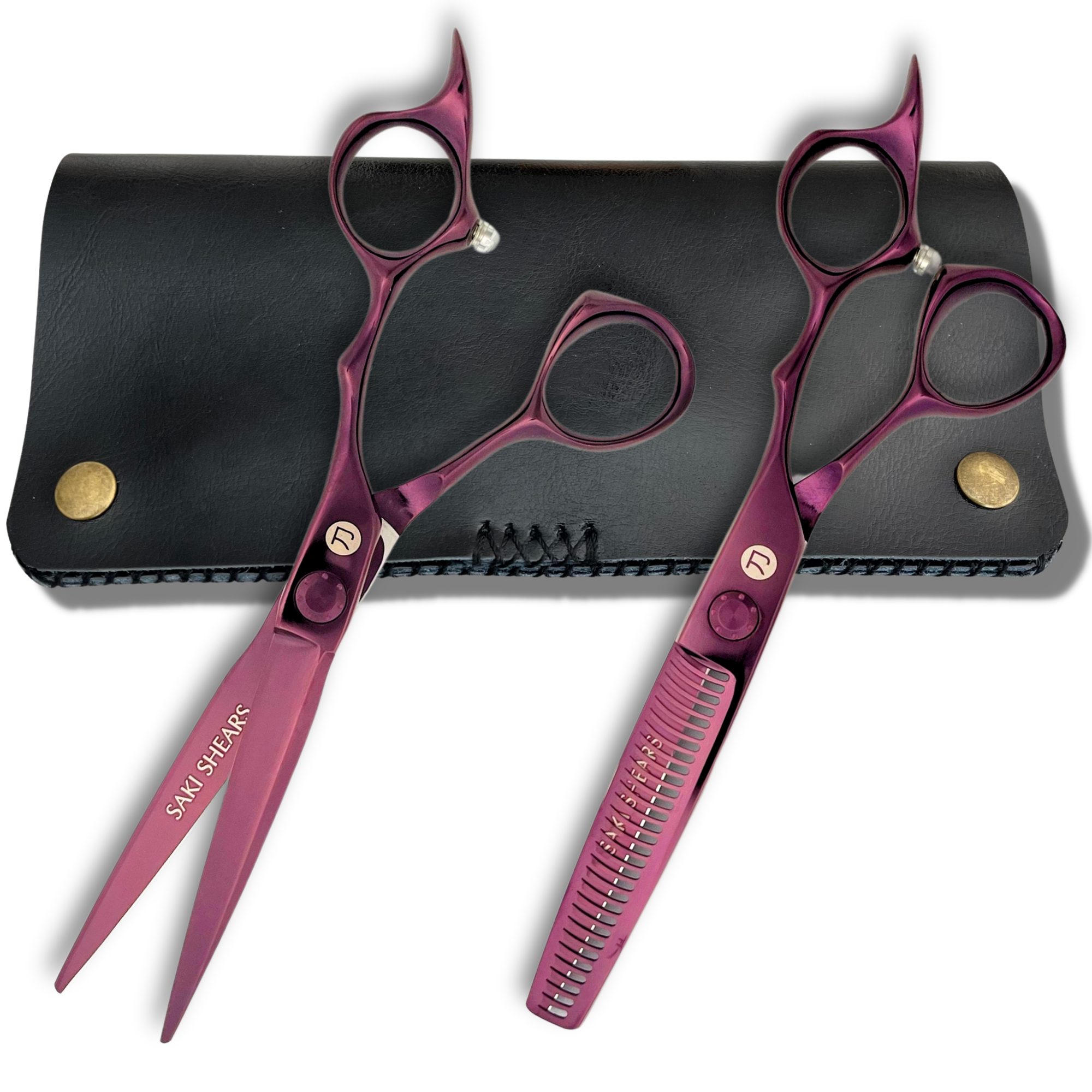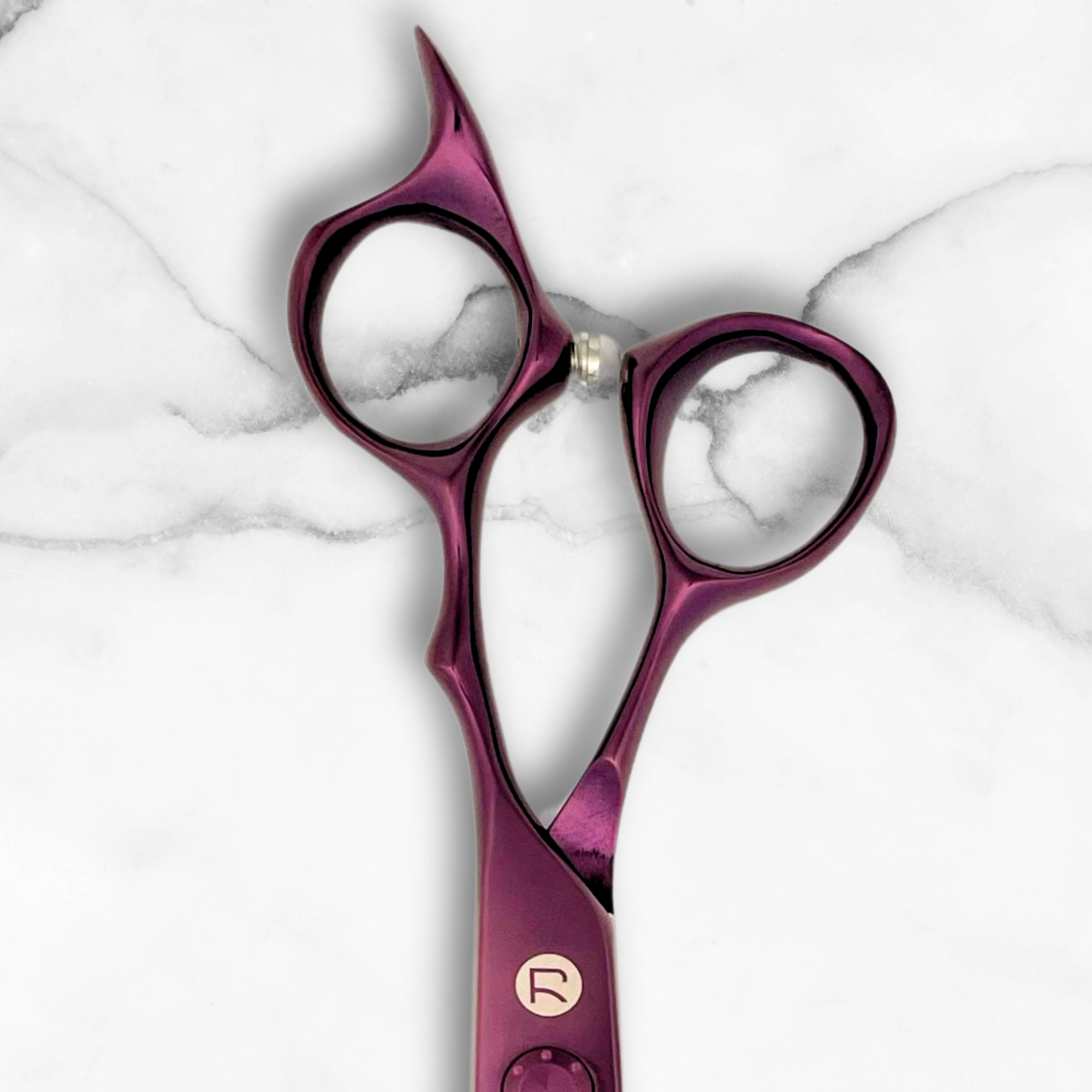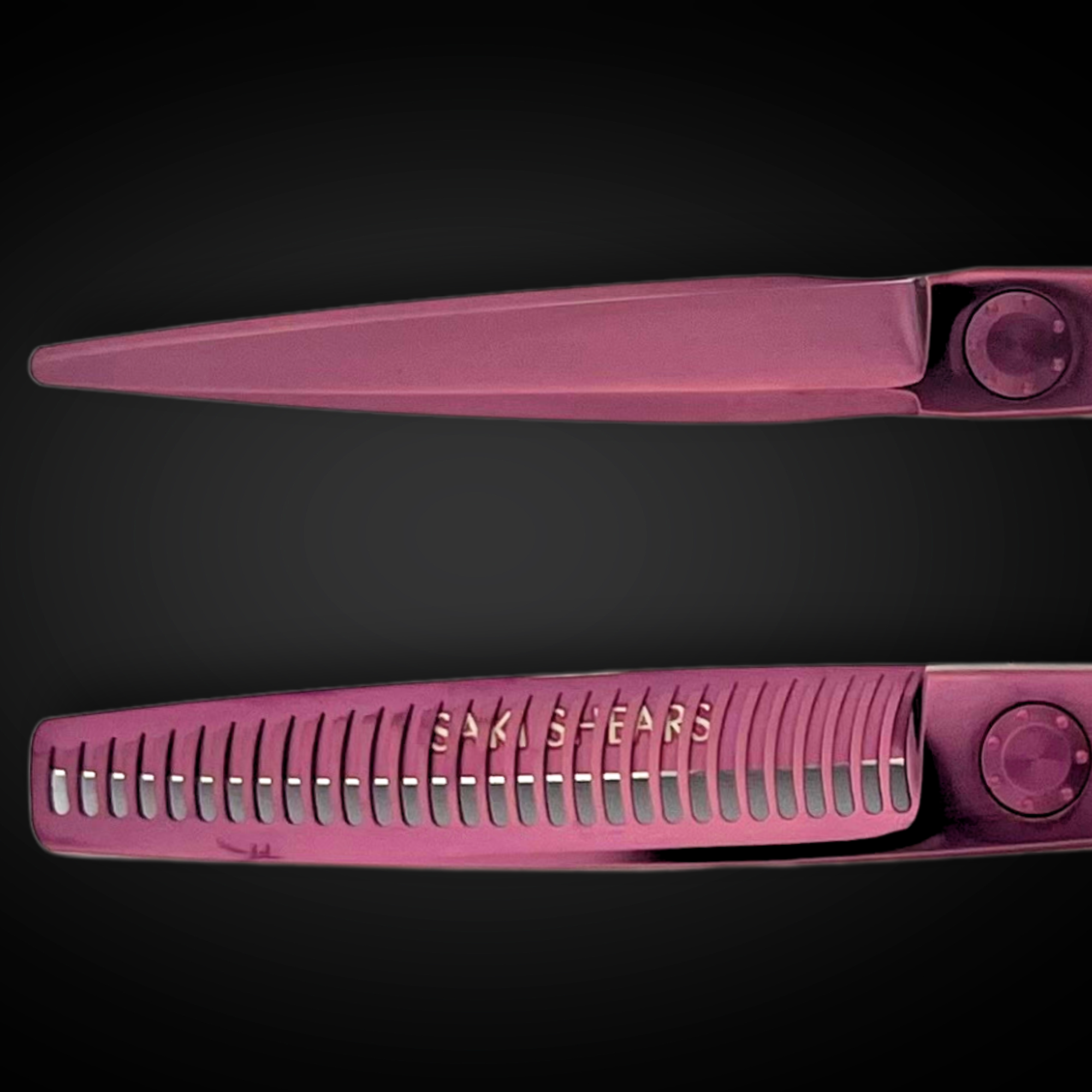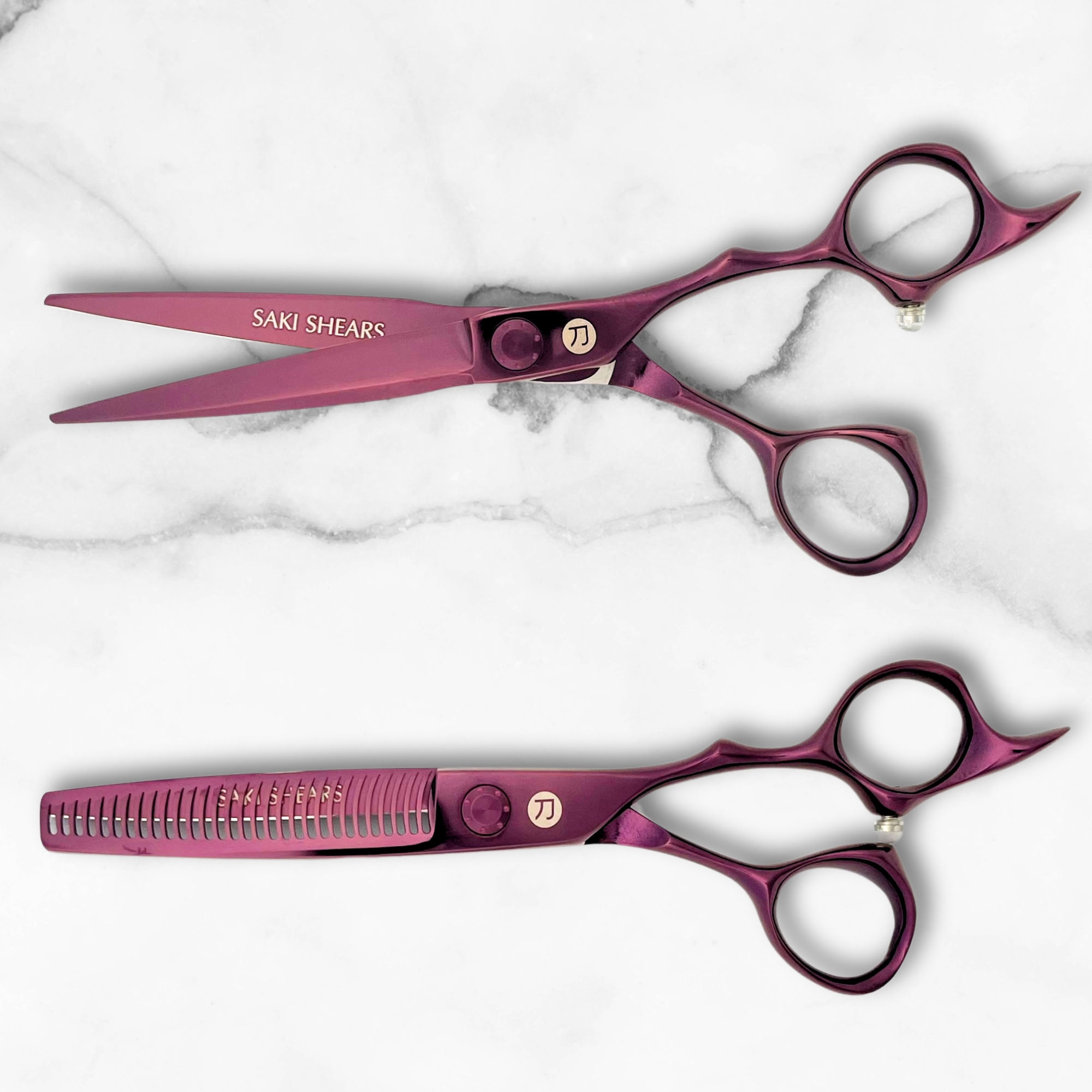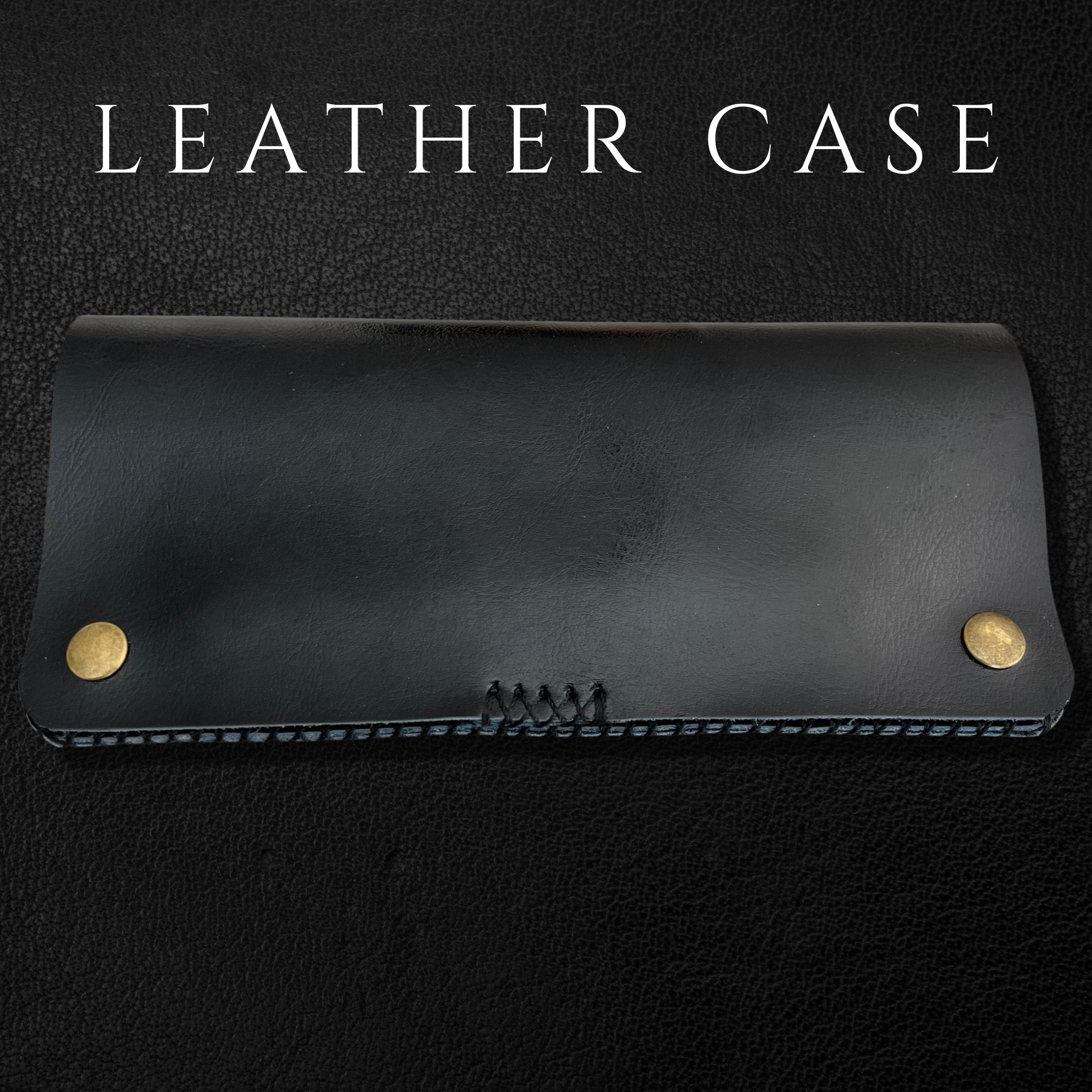Color Correction: Techniques for Common Challenges
Struggling with hair color issues like brassiness, patchiness, or damage? This guide tackles the most common color correction challenges and offers actionable solutions for each. Here's a quick breakdown:
- Brassy Tones: Identify the undertones (yellow, orange, red) based on hair level and neutralize with the right toner (violet, blue, green-based).
- Patchy Color: Blend uneven areas with custom formulas and precise application techniques.
- Over-Processed Hair: Repair damage using bond-building treatments (like Olaplex) before recoloring with gentle demi-permanent products.
Key Tips:
- Use sulfate-free shampoos and UV-protective masks to maintain results.
- Avoid over-processing by monitoring development times and working in small sections.
- Strengthen damaged hair with protein and moisture treatments before applying new color.
For a detailed step-by-step guide, product recommendations, and maintenance tips, read on.
How I Fix Orange on Brown Hair - Professional Color Correction
Fixing Brassy Hair Color
Getting rid of unwanted brassy tones starts with knowing how to identify and neutralize them correctly. Here's everything you need to know.
How to Check Brass Levels
Brassy tones depend on the depth of the hair's base color:
| Depth Level (1-10) | Common Brass Tone | Best Toner Base |
|---|---|---|
| Level 8-10 (Light Blonde) | Yellow | Violet-based |
| Level 6-7 (Dark Blonde) | Orange | Blue-based |
| Level 4-5 (Light Brown) | Red | Green-based |
To evaluate brassiness accurately, compare the hair against a white background and use professional color swatches. This will pinpoint the undertone that needs correcting.
Toner Application Steps
Applying toner requires precision to achieve the best results. Here’s the step-by-step process trusted by professionals:
1. Pre-Application Preparation
Wash the hair with a clarifying shampoo to remove any buildup and ensure even toner absorption. Towel-dry the hair until it's damp but not dripping for better product penetration.
2. Application Process
Divide the hair into four sections. Apply the toner systematically, starting at the roots. Follow the manufacturer’s instructions and check the progress every 5 minutes [8].
3. Final Steps
Rinse the toner out with cool water to close the cuticle and secure the color [7]. Finish with a deep conditioning treatment to keep the hair healthy.
To maintain the results, consistent aftercare is essential. Check out the Post-Correction Hair Care section for tips.
Best Products for Brass Removal
These toning products are highly recommended by professionals for their effectiveness:
| Product | Ideal For | Processing Time |
|---|---|---|
| Wella Color Charm | Salon use | 10-20 min |
| Redken Shades EQ | Gentle fixes | 5-15 min |
| Matrix Total Results | At-home upkeep | 3-5 min |
| Fanola No Orange | Neutralizing orange tones | 3-5 min |
Pro Tip: Use sulfate-free shampoos and apply a UV-protective mask weekly to keep your toned color lasting longer [1][7].
Fixing Patchy Hair Color
Uneven hair color can happen due to differences in hair porosity, inconsistent application, or incorrect processing times. The key to fixing it is achieving an even color while keeping the hair healthy.
Spotting Uneven Color Areas
Divide the hair into four sections and examine it under natural light. Look for these common signs and causes of patchy color:
| Area | Signs | Causes |
|---|---|---|
| Roots | Hot roots (too light/warm) | Higher scalp heat, incorrect developer use |
| Mid-lengths | Banding or lines | Overlapping during touch-ups |
| Ends | Fading or dullness | Porosity issues, past chemical treatments |
Color Blending Methods
The right blending method depends on how uneven the color is:
- Pre-Treatment Assessment: Check the hair’s condition and porosity before starting.
- Custom Formula Creation: Use a shade close to the natural color (within two levels) for better control.
- Application Technique: Apply color with soft brush strokes at the transition lines to blend seamlessly. Work in small sections to avoid further damage, ensuring even saturation and pressure.
Avoiding Uneven Application
Preventing patchy color is always easier than fixing it. Follow these steps for a smooth application:
| Step | Technique | Purpose |
|---|---|---|
| Sectioning | Use 1-2 inch subsections | Guarantees thorough saturation |
| Product Mix | Keep formula ratios consistent | Ensures uniform color |
| Processing Time | Track areas individually | Avoids over-processing |
For upkeep between salon visits, suggest professional color-depositing products to help clients maintain even color [6].
Fixing Damaged, Over-Processed Hair
Over-processed hair needs careful handling during color correction to avoid further harm. A gentle, step-by-step approach is essential to repair and recolor effectively.
Hair Repair Steps
Before correcting color, the hair must be stabilized and strengthened. Professional stylists typically follow these steps for addressing severe damage:
| Treatment Phase | Method | Purpose |
|---|---|---|
| Initial Assessment | Strand test & porosity check | Evaluate damage and plan treatments |
| Bond Rebuilding | Bond-building treatments | Repair broken disulfide bonds |
| Protein Balance | Protein reconstructors | Restore strength and elasticity |
| Moisture Lock | Intensive masks | Deep condition and seal the cuticle |
During this repair phase, clients should avoid heat styling to prevent additional stress on the hair.
Once the hair's health improves, safe coloring methods can be introduced.
Safe Coloring Methods
For compromised hair, gentle coloring techniques are essential. Demi-permanent or semi-permanent colors are ideal since they process at a lower pH and are less damaging.
"The key to successful color correction on damaged hair is patience and precision. Using demi-permanent formulas with a 10-volume developer can achieve beautiful results while maintaining hair integrity." [3]
Here are some key guidelines for applying color to damaged hair:
- Formula Adjustment: Opt for a 10-volume developer instead of 20.
- Section Control: Work in small, precise sections for even application.
- Processing Time: Check the color development every 5-10 minutes.
- Temperature Management: Avoid using heat during the process.
Best Products for Damaged Hair
Choosing the right products is critical for both repair and color success. Here are some top recommendations based on damage severity and goals:
| Product | Ideal For |
|---|---|
| K18 Leave-In Molecular Repair | Severe chemical damage |
| Olaplex No.3 Hair Perfector | Bond rebuilding |
| L'Oréal Dia Light | Gentle color deposit |
| Goldwell Colorance | Conditioning color |
For the best results, combine professional treatments every 4-6 weeks with a consistent at-home care routine. After color correction, transitioning to a tailored maintenance plan ensures long-term hair health and vibrancy.
Post-Correction Hair Care
Once you've repaired your hair (as discussed in Fixing Damaged Hair), keeping it healthy and vibrant requires a solid maintenance routine. Combining professional treatments with smart at-home care is the key to preserving your color correction results.
At-Home Care Tips
Here’s how you can keep your hair looking its best between salon visits:
- Wash less often: Stick to 2-3 washes per week, always using cool water.
- Protect from the sun: Use UV-protectant products daily and reduce heat styling.
- Maintain your color: Add color-depositing products to your routine to keep your tone fresh.
- Post-service care: Avoid washing your hair for 48-72 hours after a color service.
If your hair is damaged, try co-washing (using conditioner instead of shampoo) once a week to lock in moisture [4].
Salon Visits: What to Schedule and When
Regular salon appointments help maintain the color and health of your hair. Here’s a simple guide:
| Treatment Type | Frequency | Purpose |
|---|---|---|
| Root Touch-ups | Every 4-6 weeks | Keep your base color fresh |
| Gloss Treatments | Every 6-8 weeks | Enhance tone and add shine |
| Deep Conditioning | Every 3-4 months | Provide intensive hydration and repair |
To further protect your hair, consider using a filtered shower head to reduce mineral buildup. If you swim, wear a cap to shield your hair from chlorine exposure [6].
Seasonal tweaks are also important: Increase hydration in winter, focus on UV protection during summer, and adjust how often you wash your hair based on the weather [1][4]. These small changes can make a big difference in maintaining the results of your color correction.
Conclusion: Professional Color Correction Tips
Achieving great results in color correction requires both skill and careful planning. Start every service with a detailed consultation to review the client's hair history, assess its current condition, and understand their goals [1]. This initial step lays the groundwork for the methods outlined in this guide.
Key Focus Areas
- Thorough Consultation: Dive into the client’s hair history and set realistic expectations.
- Customized Approach: Tailor your correction strategy to the client’s specific needs.
The Right Tools Make a Difference
Using professional-grade tools is essential. High-quality equipment ensures precise sectioning and smooth blending, which are crucial for successful corrections.
Techniques That Work
Advanced methods are vital for handling complex cases. Including bond-building treatments during the process can help protect the hair while delivering the desired color.
Ongoing Education
To stay on top of your game, focus on continuous learning. Professional colorists should:
- Attend workshops and advanced training sessions.
- Keep a record of their correction techniques and results.
- Share insights and tips with fellow professionals [9].
Transparent Client Communication
Clearly explain each step of the process and the necessary aftercare to help clients understand what to expect. This approach not only manages expectations but also supports long-term results, as discussed in earlier sections [2][5].
Color correction isn’t always a quick solution - it’s often a process. By combining thorough assessments, tailored techniques, and clear communication, professionals can deliver impressive results while preserving hair health and client trust.
FAQs
How do you fix uneven toner in your hair?
To address uneven toner, follow these steps for a targeted fix:
- Use a product like Guy Tang Golden Sand Xpress Toner on areas where highlights appear uneven.
- Start by sectioning your hair into four parts to locate the uneven areas.
- Apply a violet-based toner to the ends to balance out golden yellow tones.
- Let it sit for about 5 minutes, then remix the toner and focus on the problem spots.
For ongoing care, stick to the Post-Correction Hair Care routine mentioned earlier.
How to reverse overprocessed hair?
Repairing overprocessed hair involves using treatments designed to strengthen and hydrate. Opt for bond-building products like Olaplex No.3 or K18, and pair them with deep conditioners such as the Briogeo Mask.
These products work well when combined with the repair strategies outlined in the Fixing Damaged, Over-Processed Hair section.

